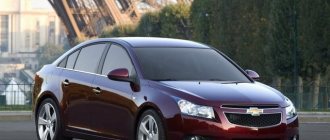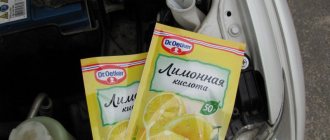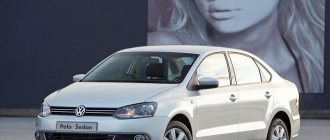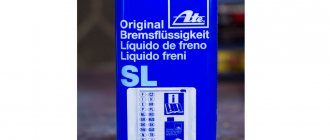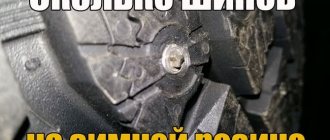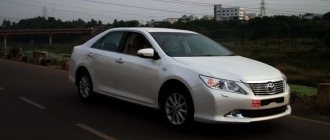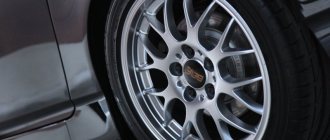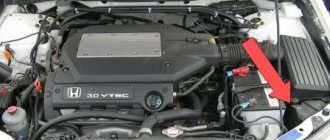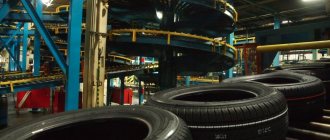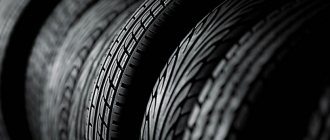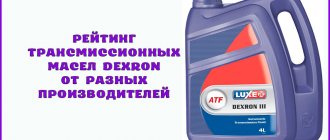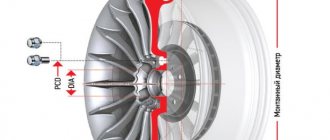With each successive onset of cold weather, some motorists inevitably face the problem of choosing winter tires for their car. By going to the page of any online store selling tires, you can find many offers from leading manufacturers. However, all presented winter tires will be divided into at least two categories: with studs and without studs. A logical question arises: which option will perform better on a winter road and due to what properties?
WHAT IS THE DIFFERENCE OF “VELcro” FROM STUDED TIRES?
The first and most obvious difference between friction tires and studded tires is, of course, the absence of studs. However, this is not the only characteristic that differs in their properties. The lack of studs in a friction tire is compensated by other features: first of all, a softer rubber compound and the presence of a large number of thin and deep transverse sipes.
It is these lamellas, or rather their edges, that friction tires cling to the surface. The combination of a soft compound, a large tread depth and a large number of sipes gives such a tire a large and stable contact patch, the ability to adhere tightly to the surface, and also remove water from the contact patch, “absorbing” it with the sipes when touching the surface and cleaning itself when moving. It was the high adhesion properties associated with softness that gave the friction tire the nickname “Velcro . In addition, some manufacturers claim to add tiny solid particles to the rubber mixture of friction tires, which are designed to act as “microscopic spikes,” further enhancing the friction properties of the tire.
Basic parameters of all-season and winter tires
Rubber intended for any season has common characteristics with those that are recommended for use exclusively in winter.
- Both “all-season” and “winter” can be operated at sub-zero temperatures up to a certain lower threshold.
- Rubber contains special materials that prevent it from becoming hard when exposed to cold weather.
- Both categories of tires have increased cross-country ability . The tire tread is made up of individual blocks that provide normal grip on slippery roads.
- The design contains lamellas - special cuts that cling to snow and ice during braking. Thanks to the notches, when the vehicle brakes sharply, the braking distance is noticeably shortened.
WHAT ARE THE ADVANTAGES AND DISADVANTAGES OF “Velcro”?
The above differences determine the performance characteristics of the two different types of tires. The effectiveness of friction tires is maximum in conditions where it does not have to deal with pure ice: such tires are good on loose snow, wet and dry asphalt, as well as in slushy snow with reagents that are abundantly sprinkled on modern roads. In addition, due to its greater softness, Velcro retains maximum grip properties longer when the temperature drops to extreme levels: tests show that at frosts above -25°, studded tires “tanner” more than friction tires.
From an operational standpoint, friction tires have a couple more advantages. Firstly, they can be safely used during the “transition” period, when temperatures drop to near zero at night and remain above zero during the day. At such times, some car owners “save” studded tires, preferring to change their shoes at the last moment, when winter has already arrived. However, it is worth remembering that the minimum temperature at which summer tires work effectively is +5°; in colder conditions, they finally “harden”, losing a significant part of their grip properties. “Velcro” works effectively in these conditions, without causing nervous attacks from the grinding of spikes on the asphalt.
Well, the second operational advantage of friction tires is a lower noise level. A studded tire inevitably has a higher noise and vibration background associated with the contact of the studs with the surface - and if on snow the difference between studs and Velcro is reduced to zero, then on ice and asphalt the hum of the studs will inevitably be noticeable.
The weaknesses of Velcro are associated precisely with the absence of spikes in conditions where their effectiveness could be maximum. First of all, this is a hard and slippery surface - ice or compacted snow: on such surfaces, studded tires will certainly be more effective, braking not only with lamellas and a soft compound (which studded tires also have), but also with studs. Ice will be especially dangerous for friction tires at near-zero temperatures: in this case, it melts and a “lubricant” of water film forms on its surface, minimizing the effectiveness of the “Velcro”: the only guaranteed effective braking tool in this case will be metal studs.
Another argument not in favor of friction tires is their less suitability for the needs of inexperienced drivers. The first instinct of such a driver when an emergency situation occurs or the need to stop quickly is to press the brake pedal all the way. In modern cars, ABS is designed to compensate for this error, but if the car is not equipped with it, the locked wheels, shod with Velcro, greatly lose efficiency, but the studs continue to work.
Why is it necessary to change tires seasonally?
Before talking about why you need to change the tires on your wheels, it should be noted that they are all divided into summer (non-studded), winter with studs and all-season (so-called Velcro). The reason for changing tires in different seasons is primarily due to road safety. This applies to the owner of the vehicle, its passengers, and in some cases to third parties.
This can be explained by the influence of weather conditions on the composition of the rubber on the wheels. For example, warm summer weather is not suitable for using studded tires due to the fact that they become softer, and the braking distance of this type of tire is short, which can negatively affect other road users.
The second important point is the financial side of the issue, since the use of out-of-season tires leads to a deterioration in its quality, rapid wear, and, as a consequence of this, the citizen will have to purchase new wheels so as not to endanger anyone and not pay a possible fine.
WHAT ARE FRICTION TIRES?
Based on their properties and performance characteristics, friction tires can be divided into “Scandinavian” and “European”. The former have greater softness and are designed for use in harsher and colder winters with large amounts of snow and ice. The second ones are slightly harder and are intended for use in warmer and more gentle conditions - for example, in cities where roads are well cleaned and regularly treated with de-icing agents, and frosts are an exception.
Tire requirements
As a rule, all sets of tires must meet certain requirements. In Russia, tires are manufactured in accordance with GOST 4754-97, 5513-97, which makes it possible to determine their expected service life. However, the law does not define any additional requirements for the quality of manufactured wheels. One small exception is the Decree of the Government of the Russian Federation No. 1090 of October 23, 1993, where among the main conditions for the use of rubber are:
- there must be no damage, including on the discs, or tread peeling;
- there must be no mismatch in size or load between the tires and the vehicle;
- tires must be the same type, size and have the same tread pattern,
Requirements for winter tires
The basic provisions concerning the admission of a vehicle to operation state that it is impossible to drive a vehicle with a residual tread depth of less than 4 mm.
Remaining tread depth
Requirements for summer tires
For non-studded tires, that is, used in the warm season, the tread depth should be at least 1.6 mm.
ARE THERE ANY OTHER FEATURES OF OPERATING “Velcro”?
In addition to the most important differences between friction rubber and studded rubber, which are described above, there are several other circumstances that are worth paying attention to.
Current Auto News
How much does it cost to refuse a traffic cop?
Advice from experienced people: homemade anti-rain and protection from cats
Firstly, recent amendments to the traffic rules have made it mandatory for a car with studded tires to have a corresponding sign with the letter “Ш”. However, this requirement, as you might guess, does not apply to winter friction tires - that is, you can drive on Velcro without the “Spikes” sign.
Secondly, it is worth remembering that studded tires are prohibited in most European countries as they destroy the road surface. So, if you are planning to travel abroad in your car, it is worth checking the route in advance and finding out whether you will need to get a set of Velcro to replace the existing studded tires for this trip.
But the legal requirements for winter tires, specified in the technical regulations of the Customs Union and the list of faults prohibiting the operation of a vehicle, are, of course, the same for studded and friction tires. The vehicle must be equipped with winter tires marked with a mountain peak with three peaks and a snowflake inside it, as well as "M+S", "M&S" or "MS", at least from December to February, and the remaining height The tread of winter tires should be at least 4 millimeters.
However, there is one extremely important note here: the same technical regulations state that “the operation of vehicles equipped with tires with anti-skid studs is prohibited in the summer” - that is, there is no direct ban on the operation of Velcro in the summer. However, you should not think that “what is not prohibited is permitted”: the characteristics of friction tires are designed exclusively for winter use, and their outstanding softness on hot asphalt will result in a loss of adequate controllability and braking distance. At significant above-zero temperatures, a car on friction tires “floats”, and their wear accelerates by orders of magnitude. Therefore, using Velcro for purposes other than its intended purpose is strictly not recommended.
Selection for SUV or crossover
We told you how to distinguish winter tires from summer tires - by the snowflake icon. However, to choose shoes for a non-trivial car, this knowledge may not be enough. When purchasing wheels for a crossover, you should imagine where the car will spend most of its time. If in the city, then standard tires with the designation AW (All Weather or Aqua - improved drainage and increased resistance to aquaplaning) are a good choice.
If the car goes beyond the definition of an SUV and you are planning trips into nature, then it is better to give preference to sets with a developed tire tread, improved lugs and increased cross-country ability. Such kits are designated by the letters AT - All Terrain.
For real off-road vehicles, special tires like Bridgestone Dueler are used, which have proven themselves in combat conditions and have high load resistance and excellent grip. This set is more expensive than the standard one, but its price is justified by its excellent qualities.
There are a lot of all-season tires from different manufacturers. There is also an imported one - for example, a link with a detailed description. There is also ours - K156 or K156-1 - for Gazelle and Niva, respectively. There are other sizes for different models. It is very easy to recognize them by their markings - you just need to read the markings. I quote...
When choosing winter tires, the question often arises: “Which is better, Velcro tires or studded tires?” You can make your choice by studying the advantages and disadvantages of both types of tires.
Bicycle equipment
A bicycle is a relatively complex mechanism with a large number of moving elements. And the frost affects them. I’ll tell you about the peculiarities of the impact of winter weather on various parts.
Brakes.
If it’s disc, then everything is fine, you don’t have to worry (the main thing is don’t forget about increasing the braking distance). But if they are rim ones, then when left for a long time in cold temperatures below minus 5 degrees, they stiffen tightly and do not slow down at all (!). In order to bring them to their senses, you need to carefully drive forward, slow down, drive some more, slow down some more, after 15-20 braking sessions they will warm up by friction on the rim and start working. I won’t talk about other types of brakes - roller, drum, band - due to their rarity.
Transfers.
After standing for a long time, they, like other parts of the bicycle, become frozen. The chain can simply slip to another gear without pressing the switch. Be careful. It is best to drive in the gear that has been established as stable. But this is only in severe frost and ice.
Pedals.
They also become icy, and your foot can slip. If in summer it is, in principle, not very important which side of the pedal you press on (the opposite side usually does not have protrusions or hooks), then in winter make sure that the pedal is pressed into the sole of the shoe and held firmly.
Bike lock.
It can freeze tightly (like a car). You'll have to warm it up. The easiest way is to pour boiling water over it. A lock with a key is more reliable and more convenient in cold weather than a lock with a code.
Seat.
It’s better to have a cloth so that, like in the rain, you can wipe off the snow after standing outside.
Electrics.
Cycling computers almost always die and do not work in sub-zero weather. They are simply not designed for this. There are some models that are indifferent to weather conditions, but to establish this, you need to test. At least the ordinary wireless Cateye doesn’t work for me in winter, and neither does O-Synce. So if suddenly some company makes a cycling computer that works in twenty-degree frost, I’ll be happy to test it.
Signal.
An ordinary bicycle bell with a rotating inner part freezes and stops ringing - especially if there is ice on it. But the “dudelka” doesn’t care about frost. Its timbre changes, but the volume remains the same.
Why you shouldn't drive on winter tires in the summer from a technical point of view
In addition to liability before the law, driving on inappropriate tires has its own technical justification. First of all, this is due to the type of material used for treads, the properties of the road surface, the behavior of the car at different speeds and the performance of certain maneuvers, etc. Due to a decrease in the hardness of a winter tire in the summer, the following unfavorable aspects may arise:
- A decrease in rigidity leads to a decrease in strength. In other words, the material will age and wear out much faster; in the summer, the winter version will simply be erased to no avail;
- The braking distance will increase due to the softness of the material, and the movement will become noisier. Many have heard the “music” from cars that raced along dry summer asphalt surfaces on studded tires;
- Studded tires wear out quickly, and in the process of improper use, metal studs are lost;
- For road surfaces, contact during warm periods with sharp, hard spikes threatens rapid wear. This speeds up the deterioration of roads and the ability to travel efficiently;
- Driving a car wearing out-of-season tires becomes more difficult. During certain maneuvers or speeds, the grip on the surface changes, which leads to an atypical response of the car as a whole. The driver's inability to immediately orient himself often becomes the cause of an accident;
- In general, maneuverability will decrease even at low speeds, which is due to the different qualities of protectors for hard, warm surfaces;
- Fuel consumption increases. In order for a car to travel a certain distance in constant “struggle” with the surface due to the softness of the treads, additional energy will be required. For a car, the benefit is that it burns more fuel, and you have to pay for unnecessary consumption, which can be avoided with seasonal shoes;
- Driving on wet surfaces in a thunderstorm or bad weather completely reduces maneuverability and the ability of tires to grip the road surface. This occurs due to the discrepancy between the tread pattern and the drainage needs of the rubber;
- Increasing the grip area due to the softening of the tire material increases the accident rate to a certain extent.
Driving such a vehicle is extremely difficult. You have to forget about a comfortable ride, enjoying the process and the landscapes passing by. You will have to constantly remain in tension and assess the situation. Therefore, everyone should make their own choice and decide whether saving on another set for the season is worth all the troubles and problems.
